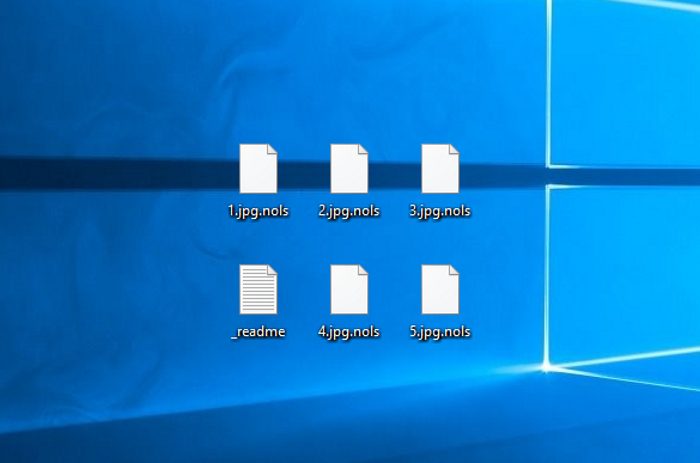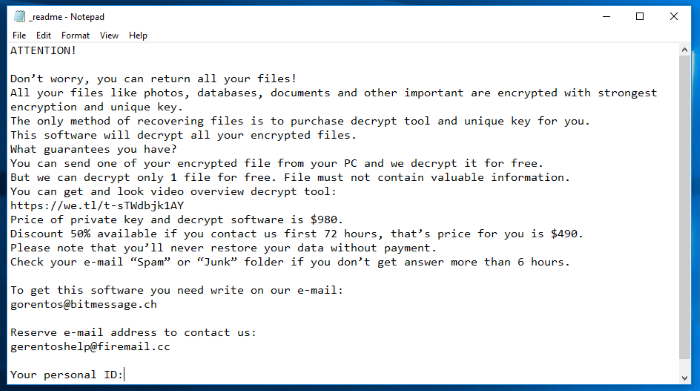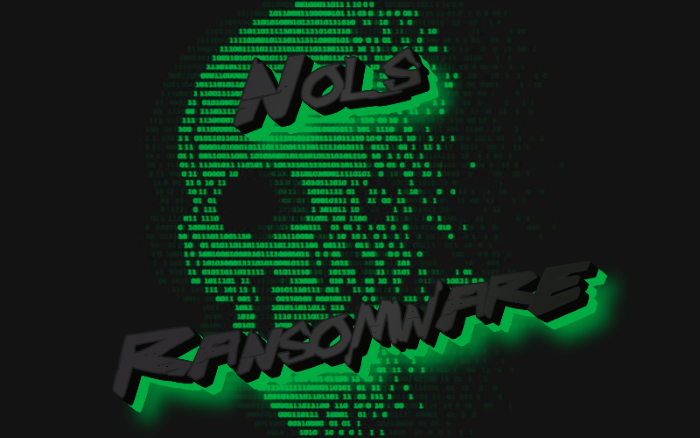The new internet threat, that everyone can face, is Nols ransomware virus. This threat belongs to the STOP(DJVU) file-encryption ransomware family, that has a great variety of representatives, for example: Werd, Ndarod, Leto, Bora and RECO ransomwares. The malwares, that belongs to this family, modify the definite file formats and prevent the owners of the infected device from accessing them. It’s very easy to become infected with Nols ransomware, as hackers insert the malicious code into a great variety of files, and once a user opens it – the virus activates. You can easily identify that your device is infected with Nols ransomware, and if it’s so, you’d better not to try to remove Nols ransomware manually, as encryption process is not a simple renaming of the files.

Encryption process can be characterized as a logical one, as ransomwares use a definite unique algorithm. The process can be subdivided into two main steps – scanning and encryption itself. Nols ransomware looks for the documents and media files during the scanning process in all folders of the hard drive, including the connected devices. When it’s done, Nols ransomware begins the encryption. It modificates the files and changes their extensions to .nols ones. The operating system can’t read encrypted files and it requires restoration of the files, if you need to open them. In order to make the owner of the device use the services that hacker offer, the virus creates a ransom note, that is called _readme.txt and contains the following information:

_readme.txt
Don’t worry, you can return all your files!
All your files like photos, databases, documents and other important are encrypted with strongest encryption and unique key.
The only method of recovering files is to purchase decrypt tool and unique key for you.
This software will decrypt all your encrypted files.
What guarantees you have?
You can send one of your encrypted file from your PC and we decrypt it for free.
But we can decrypt only 1 file for free. File must not contain valuable information.
You can get and look video overview decrypt tool:
https://we.tl/t-sTWdbjk1AY
Price of private key and decrypt software is $980.
Discount 50% available if you contact us first 72 hours, that’s price for you is $490.
Please note that you’ll never restore your data without payment.
Check your e-mail “Spam” or “Junk” folder if you don’t get answer more than 6 hours.
To get this software you need write on our e-mail:
gorentos@bitmessage.ch
Reserve e-mail address to contact us:
gerentoshelp@firemail.cc
Your personal ID:
*ID number*
unfortunately, there is no any real and firm guarantee, that hackers will really help you. There is no any reason for them to help a victim after the payment. Moreover, the situation can become even worse, as instead of a decryption tool hackers can send you another ransomware, remote access software or a trojan. So you can see, that it’s a great risk to contact with them. If you want to remove Nols ransomware and decrypt .nols files, it’s better to use our guide!
Article’s Guide
- How to remove Nols Ransomware from your computer
- How to remove Nols Ransomware encryption from your files
- Data Recovery
- Automated decryption tools
- Windows Previous Versions
How to remove Nols Ransomware from your computer?
We strongly recommend you to use a powerful anti-malware program that has this threat in its database. It will mitigate the risks of the wrong installation, and will remove Nols from your computer with all of its leftovers and register files.
Solution for Windows users: our choice is Norton 360 . Norton 360 scans your computer and detects various threats like Nols, then removes it with all of the related malicious files, folders and registry keys.
If you are Mac user, we advise you to use Combo Cleaner.
How to decrypt .nols files?
Once you’ve removed the virus, you are probably thinking how to decrypt .nols files. Let’s take a look at possible ways of decrypting your data.
Recover data with Data Recovery

- Download and install Data Recovery
- Select drives and folders with your files, then click Scan.
- Choose all the files in a folder, then press on Restore button.
- Manage export location.
The download is an evaluation version for recovering files. To unlock all features and tools, purchase is required ($49.99-299). By clicking the button you agree to EULA and Privacy Policy. Downloading will start automatically.
Restore data with automated decryption tools
Unfortunately, due to the novelty of Nols ransomware, there are no available automatic decryptors for this encryptor yet. Still, there is no need to invest in the malicious scheme by paying a ransom. You are able to recover files manually.
You can try to use one of these methods in order to restore your encrypted data manually.
Remove Werd encryption with Windows Previous Versions
This feature is working on Windows Vista (not Home version), Windows 7 and later versions. Windows keeps copies of files and folders which you can use to restore data on your computer. In order to restore data from Windows Backup, take the following steps:
- Open My Computer and search for the folders you want to restore;
- Right-click on the folder and choose Restore previous versions option;
- The option will show you the list of all the previous copies of the folder;
- Select restore date and the option you need: Open, Copy and Restore.
Remove Werd encryption with System Restore
You can always try to use System Restore in order to roll back your system to its condition before infection infiltration. All the Windows versions include this option.
- Type restore in the Search tool;
- Click on the result;
- Choose restore point before the infection infiltration;
- Follow the on-screen instructions.
Was this tutorial helpful?[Total: 0 Average: 0]
This feature is working on Windows Vista (not Home version), Windows 7 and later versions. Windows keeps copies of files and folders which you can use to restore data on your computer. In order to restore data from Windows Backup, take the following steps:
- Open My Computer and search for the folders you want to restore;
- Right-click on the folder and choose Restore previous versions option;
- The option will show you the list of all the previous copies of the folder;
- Select restore date and the option you need: Open, Copy and Restore.
You can always try to use System Restore in order to roll back your system to its condition before infection infiltration. All the Windows versions include this option.
- Type restore in the Search tool;
- Click on the result;
- Choose restore point before the infection infiltration;
- Follow the on-screen instructions.


